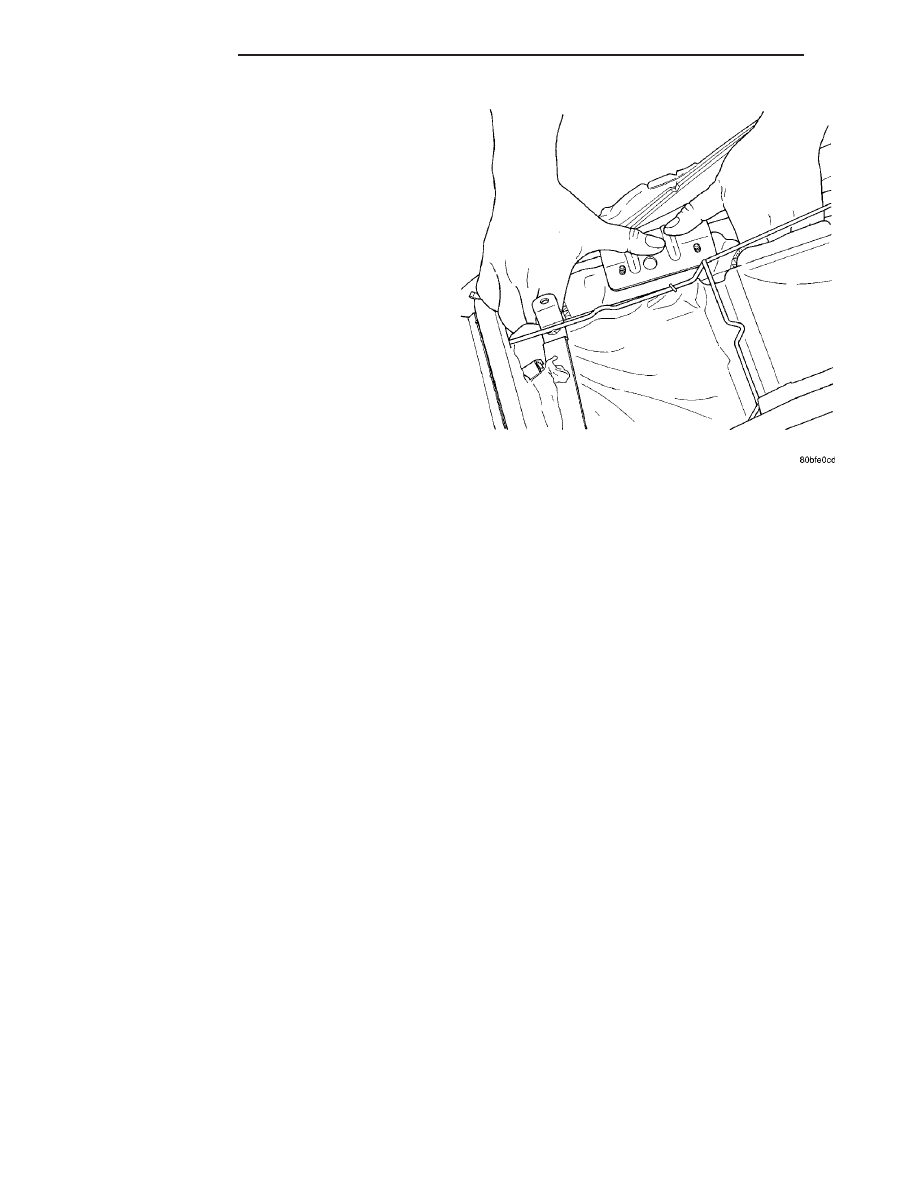Chrysler PT Cruiser. Manual - part 522

(11) Working between seat back trim cover/cushion
and frame carefully unhook seat airbag studs from
nylon sleeve and slide airbag out of sleeve. Be careful
not to tear nylon sleeve as this will affect function of
airbag system.
CAUTION: Be certain not to tear the seat airbag
nylon sleeve during removal.
INSTALLATION
DEPLOYED SEAT AIRBAG
WARNING: DO NOT REPLACE A DEPLOYED SEAT
AIRBAG.
IF
THE
SEAT
AIRBAG
HAS
BEEN
DEPLOYED, THE ENTIRE SEAT BACK AND ALL
DAMAGED PARTS MUST BE REPLACED.
If the seat airbag was deployed, the entire seat
back must be replaced (Refer to 23 - BODY/SEATS/
SEAT BACK - INSTALLATION).
NONDEPLOYED SEAT AIRBAG
WARNING:
ONLY
REPLACE
A
NONDEPLOYED
SEAT AIRBAG IF FAULTY OR DEFECTIVE.
NOTE: The seat airbag connector must face down
(toward seat cushion) after installation.
(1) Carefully slide the side airbag in nylon sleeve
until mounting studs line up with holes provided in
nylon sleeve. Be careful not to tear nylon sleeve as
this will affect function of airbag system.
CAUTION: The side airbag must be inside the nylon
sleeve before installing retaining nuts. Failure to do
so will adversely affect the function of the side
impact airbag system.
(2) Pull seat airbag and nylon sleeve assembly up
to line up mounting studs with holes provided in seat
back frame mounting bracket (Fig. 42). Install the
seat airbag retaining nuts. Torque to 10.7 N·m (94.7
in. lbs.).
(3) Position the upper seat back trim cover and
cushion over seat back frame.
(4) Connect the seat airbag electrical connector.
After initial connector is installed be certain the yel-
low locking tab is in the upper “locked” position.
Check to be certain connector cannot be removed
once yellow locking tab is positioned.
(5) Position seat back trim cover and install seat
back trim cover J-straps on the upper, lower and air-
bag side of seat back frame.
(6) Install the plastic back panel on the seat back
(Fig. 40). Install four screws in the upper mounting
location of the back cover.
CAUTION: Be certain plastic back panel is securely
installed on the seat back. Failure to do so will
adversely affect the side impact airbag system.
(7) Install the front seat in vehicle (Refer to 23 -
BODY/SEATS/SEAT - INSTALLATION).
WARNING: DO NOT CONNECT BATTERY NEGATIVE
CABLE YET (Refer to 8 - ELECTRICAL/RESTRAINTS
- DIAGNOSIS AND TESTING - AIRBAG SYSTEM).
(8) Close hood.
(9) Verify vehicle and system operation.
Fig. 42 INSTALLING SIDE AIRBAG INTO SEAT
BACK
8O - 24
RESTRAINTS
PT
SEAT AIRBAG (Continued)